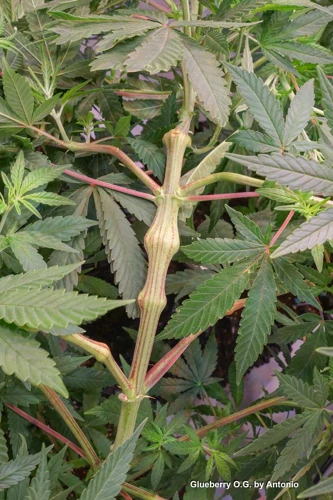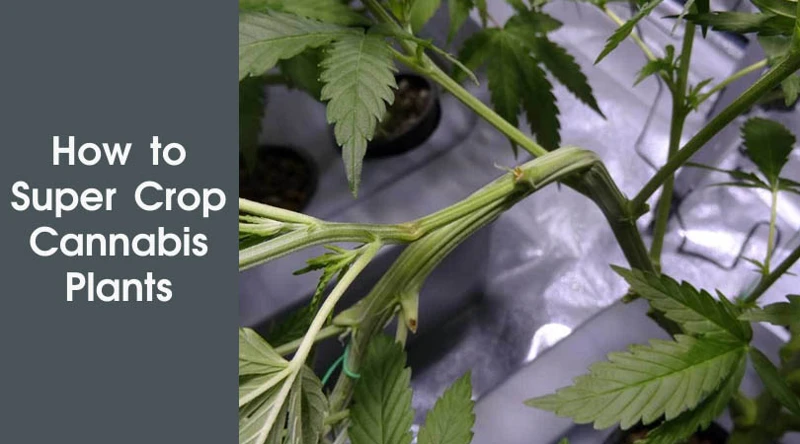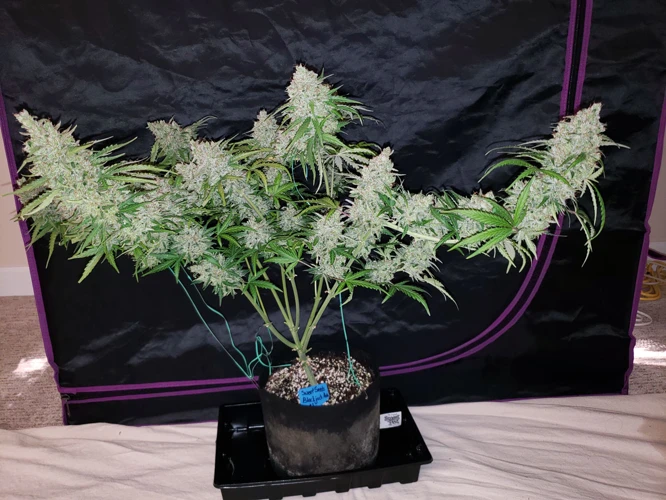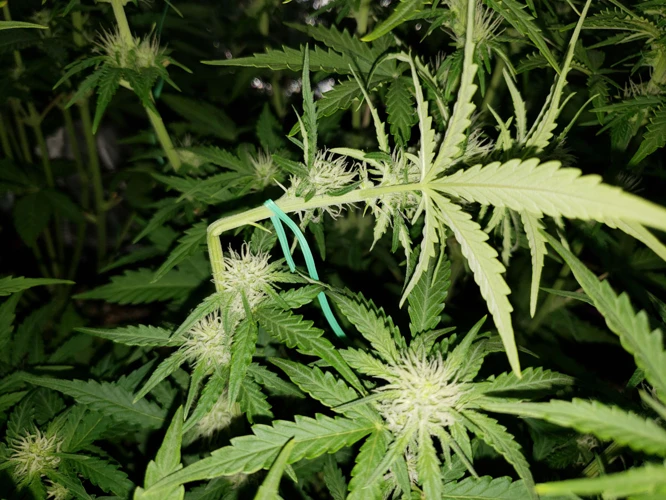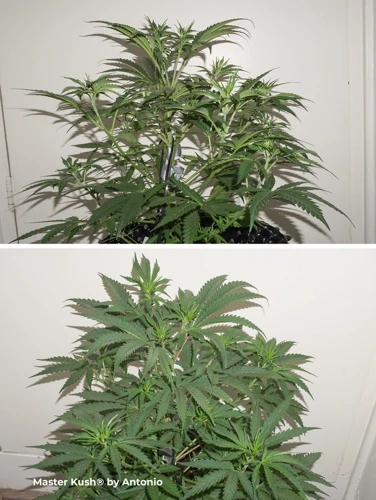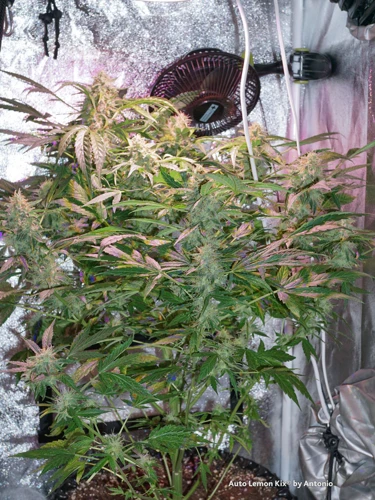
Mastering the Art of Supercropping
Introduction
Contents
As a cannabis grower, mastering various High-Stress Training (HST) techniques can help you achieve optimal yields and a healthier garden. In this guide, we will focus on one of the best and efficient HST techniques for cannabis plants – Supercropping. Through understanding what Supercropping is, why it is beneficial, and how to do it properly, you too can elevate your gardening skills to the next level. So, grab your gardening tools, and let’s dive into the fascinating world of Supercropping!
What is Supercropping?
Supercropping is a high-stress training (HST) technique that involves gently bending a plant’s branches in order to prompt the plant to redirect its growth. This redirection can lead to a more efficient uptake of light and nutrients, resulting in bigger, denser buds.
The process of supercropping:
- Select a strong branch that can be gently bent without snapping. Ideally, this branch should be near the top of the plant.
- Softly pinch and massage the stem below the point where the bend is desired. This will soften the stem and make it more pliable.
- Apply pressure to the stem, gently bending it to the desired angle. The bend should be severe enough to cause the plant to redirect its growth, but not so severe that it snaps the stem.
- Use a soft wire or twist-tie to train the branch in place in its new position.
- Monitor the plant closely during the healing process to make sure it is recovering properly.
While supercropping can be intimidating for beginners, it is a rewarding technique that can help you maximize your yields with relatively little effort. Just make sure to follow the recommended safety tips and carefully monitor your plants during and after the process.
Why Supercrop Cannabis?
One reason for supercropping cannabis is to increase yield. By strategically stressing the plant, it is possible to make it produce more buds at the top. This technique is a form of High-Stress Training (HST). Supercropping also helps to control the height of the plant, so it fits better into small spaces.
Another reason for supercropping is to increase overall potency. By manipulating the branches, it is possible to increase the amount of light that each bud receives. This will help to create more trichomes, which contain THC and other desirable cannabinoids.
Using supercropping also allows growers to create a more symmetrical plant. By manipulating the plant’s growth, it is possible to create a bushier, more even canopy. This technique can help to reduce the risk of mold or disease, as it improves overall airflow and light penetration.
Supercropping is also a great technique for growers who want to learn more about the anatomy and physiology of cannabis plants. By understanding how the plant responds to stress, it is possible to develop a greater understanding of how to care for it and how to maximize its growth potential.
The benefits of supercropping cannabis are many. This technique can help to increase yield, potency, and plant health. It is also a valuable tool for growers who want to develop a deeper understanding of how to care for their plants.
Before You Begin
As you prepare to undertake the practice of supercropping, it is important to first familiarize yourself with some key aspects of cannabis plant anatomy and carefully consider the timing of your efforts. Before delving into the actual technique of supercropping, take a moment to read through this section to ensure that you have all the information you need to succeed in your HST endeavors.
Cannabis Plant Anatomy
One key consideration before attempting supercropping is understanding the anatomy of your cannabis plant. Knowing the different parts of the plant and how they function will help you select the right branch to supercrop and avoid damaging the plant.
Here is a breakdown of the different parts of the cannabis plant and their functions:
| Plant Part | Function |
|---|---|
| Stem | The stem is the main support structure of the plant. It transports water and nutrients from the roots to the leaves and flowers. |
| Nodes | Nodes are the points along the stem where leaves and branches grow. They play a crucial role in the development of the plant and provide support for the flowers. |
| Leaves | Leaves are responsible for capturing light energy and transforming it into glucose through photosynthesis. They also help regulate the plant’s temperature and moisture levels. |
| Buds | Buds are the flowers of the cannabis plant. They contain the majority of the plant’s psychoactive compounds, such as THC and CBD. |
| Colas | Colas are the main bud sites of the cannabis plant. They are typically larger and more developed than secondary buds and are the primary focus of many growers. |
| Internodes | Internodes are the segments of stem between two nodes. They play a vital role in determining the overall structure and shape of the plant. |
| Apical Meristem | The apical meristem is the growing tip of the plant. It determines the plant’s overall height and shape and can be manipulated through supercropping. |
Understanding how these different parts of the cannabis plant work together will help you make informed decisions when supercropping. It’s also important to note that supercropping should only be attempted on mature plants with strong stems, as younger plants may not be able to handle the stress.
When to Supercrop?
In order to successfully supercrop your cannabis plants, timing is crucial. Here are some key factors to consider when deciding when to supercrop:
| Factor | Description |
| Plant maturity | Supercropping is best done during the vegetative stage, when plants are actively growing and have not yet begun to flower. Attempting to supercrop during the flowering stage can stress the plant and reduce overall yield. |
| Branch thickness | The branch you select to supercrop should be thick enough to bend without breaking. Thinner branches are more fragile and more likely to break, which can damage the plant and reduce yield. |
| Plant health | Only healthy plants should be supercropped. If a plant is already stressed or diseased, further stress from supercropping can cause permanent damage. |
| Plant growth rate | Plants that are growing quickly are better candidates for supercropping. Slow-growing plants may take longer to recover and may not benefit as much from the technique. |
By taking these factors into account, you can ensure that you supercrop at the optimal time for your plants, maximizing the benefits and minimizing the risks.
Tools You’ll Need
Now that you understand the benefits and importance of supercropping, it’s time to gather the necessary tools to get started. Proper equipment and tools are essential to ensure a successful and safe HST experience. Having the appropriate tools on hand will make the process easier and more efficient. From selecting the right tool to using it proficiently, in this section of the article, we’ll walk you through the necessary equipment to supercrop your cannabis plants like a pro. So, let’s dive into the tools that you will need to take your cannabis plants’ growth to the next level with supercropping.
Supercropping Tools List
When it comes to successfully supercropping your cannabis plants, having the right tools can make all the difference. Here is a list of the essential supercropping tools that you’ll need to master this High Stress Training (HST) technique:
| Tool | Description |
| Sharp Scissors or Knife | A sharp cutting tool will be needed to make a straight cut on the stem before bending it. Make sure it’s clean and sterile to avoid contamination. |
| Elastic Ties | Elastic ties will be used to fix the plant after bending. They need to be tight so that the branch stays bent, but not too tight to avoid cutting into the plant’s tissue. |
| Gloves | Protect your hands from cuts or injury while manipulating the plant. Choose a pair of gloves that will give you enough dexterity to handle each stem delicately. |
| Hummer | A hummer comes in handy when you need to support a branch or stem after supercropping. Don’t hammer too hard to avoid damaging the plant. |
| Support Stakes | These stakes are used to provide additional support to the bent branch, keeping it upright as it grows. It’s essential to use stakes that won’t damage the plant’s tissues. |
Note: The tools aren’t the only important aspect of supercropping. Always pay close attention to your plant’s health and growth pattern to adjust your supercropping technique for optimal results.
Tips for Using Tools Safely
When it comes to using tools for supercropping, safety should always be a top priority. Here are some tips to keep in mind:
| Tip | Description |
|---|---|
| Use sharp tools | Sharp tools are safer to use than dull ones because they require less force to cut or snip a branch. This means you’ll have more control over your cuts and will be less likely to accidentally injure yourself. |
| Wear gloves | Gloves can protect your hands from cuts and scrapes while you’re working with sharp tools. Additionally, gloves can prevent the transfer of oils and other contaminants from your hands to the plant. |
| Keep tools clean and sanitized | Dirty tools can transfer pathogens and other harmful substances onto your plants. To avoid this, clean your tools regularly with a disinfectant solution or rubbing alcohol. |
| Position tools carefully | When you’re using tools like clippers or scissors, be mindful of where your fingers are in relation to the blades. Place your fingers on the opposite side of the cut or snip to avoid accidentally cutting yourself. |
| Work in a well-lit area | Good lighting can help you see what you’re doing and reduce the risk of errors. When working with tools, it’s important to have adequate lighting to ensure accuracy and precision. |
| Take breaks | Supercropping can be a labor-intensive process, and it’s easy to get fatigued over time. Take breaks as needed to rest your hands and avoid making mistakes due to fatigue. |
By following these tips for using tools safely, you can reduce the risk of injury and keep your plants healthy and thriving. Remember to take your time and work carefully, and always prioritize safety in your approach.
How to Supercrop
Now that we’ve covered the benefits and risks of supercropping, it’s time to learn how to actually do it. While it may seem daunting at first, with the right tools and technique, this training method can be a game-changer for your cannabis garden. In this section, we will guide you through the step-by-step process of successfully supercropping your cannabis plants, providing tips along the way to help ensure a healthy and bountiful harvest. So roll up your sleeves, grab your tools, and let’s get started.
Selecting the Branch to Supercrop
When selecting the branch to supercrop, there are a few factors to consider. You want to choose a branch that is strong enough to withstand the bending and training process without snapping or breaking. At the same time, you don’t want to select a branch that is too rigid or woody, as it will be difficult to manipulate. Here are some important considerations when choosing the right branch:
| Factor | Consideration |
|---|---|
| Age | Choose a branch that is neither too young nor too old. Newer branches will be too pliable and could snap easily, while older, woodier branches are difficult to bend without breaking. |
| Location | Look for branches growing outward and upward from the plant. These are ideal candidates for supercropping because they will help with light distribution and plant structure. |
| Size | Choose a branch that is large enough to provide a significant stem diameter for increased nutrient intake and support, but not so large that it is difficult to bend or manipulate. |
| Vigor | Look for a branch that is strong and healthy. Avoid branches that are diseased or damaged, as they may not recover well from supercropping. |
By considering these factors, you can select the right branch to supercrop, which will help ensure a successful outcome. Remember to be patient and take your time when selecting the branch, as rushing the process could result in damaging or breaking the branch.
Bending the Branch
To properly supercrop a cannabis plant, you will need to carefully bend the selected branch in a way that effectively damages it without breaking it entirely. Here are the steps to follow:
- Identify the point on the branch that you want to bend. This should be located about 4-6 inches from the main stem of the plant.
- With your fingers, gently squeeze and pinch the stem at this point to make it pliable. You can also use a tool such as pliers to help soften up the stem.
- Once the branch is flexible enough, slowly bend it over to a 45-degree angle. This will cause the stem to crease, which is the important step in supercropping.
- Hold the branch at this angle for about 10-15 seconds to allow the crease to set in.
- If you hear any cracking or snapping sounds, stop immediately and try again with a new branch. A properly supercropped branch should not break, but rather remain intact while bearing a noticeable crease.
It’s important to note that the amount of pressure you apply when bending the branch will impact the severity of the crease. Start with a gentle bend and apply more pressure incrementally until you achieve the desired result. Once the branch is bent to your satisfaction, it’s time to move onto the next step: securing it in place.
Securing the Branch
To secure the branch after it has been bent, you will need some materials to hold it in place. Here are the steps to properly secure the branch:
- Use Soft Ties: It is important to not use hard or sharp objects to tie down the branch as it can cause damage to the plant. Instead, use soft ties like fabric strips or plant-specific ties to gently hold the branch in place.
- Tie Loosely: Make sure not to tie too tightly as this can cut off the plant’s circulation and cause harm. The tie should be tight enough to hold the branch in place but also loose enough to allow for some movement.
- Anchor the Tie: Tie the soft ties around the base of the stem or to a nearby branch to anchor it in place. This will ensure that the branch is secure and will not move while it is healing.
- Check Regularly: It is important to check on the tied branch regularly to make sure it is healing properly and not causing any damage. If you notice any issues or discomfort, it may be necessary to adjust the tie.
By properly securing the bent branch, you are allowing it to heal and recover without causing any additional stress or harm to the plant.
Post-Supercropping Recovery
After supercropping, the plant needs time to recover and heal. This process can take anywhere from a few days to a week or more, depending on the severity of the supercrop. Here are some essential steps to ensure your plant recovers successfully:
- Provide Support: The branch you supercropped will need support to avoid any further damage. Use plant ties or a soft string to attach the branch to the stem or trellis.
- Maintain Humidity: Keep the plant in a humid environment for the first few days to help it recover faster. You can achieve this by placing a clear plastic bag over the top of the plant or by using a humidifier.
- Reduce Light Exposure: Since the plant is in a vulnerable state, it’s recommended to decrease the light it receives for a few days. Try raising the light or moving the plant to a shadier spot.
- Water and Nutrients: Make sure the plant is hydrated and receiving the necessary nutrients. However, be careful not to overfeed the plant during its recovery period, as this can cause further stress.
- Monitor Progress: Keep an eye on the plant to ensure it’s recovering. Look for signs of new growth and make sure the branch is healing properly. If the branch shows any signs of rot or disease, immediately remove it from the plant.
By following these steps, your plant should recover from supercropping without any issues. Remember, always be gentle when supercropping and take care of the plant during its recovery period.
Advanced Techniques
Now that you have mastered the basics of supercropping, it’s time to take your skills to the next level with some advanced techniques. These methods require a bit more experience, patience, and attention to detail, but the rewards can be well worth it. By combining supercropping with other high-stress training (HST) techniques such as topping or the screen of green (SCROG) method, you can manipulate your plant’s growth and maximize your yield. In this section, we’ll dive deeper into these techniques and explore how they can be used together with supercropping for even more impressive results.
Topping and Supercropping
Topping and Supercropping are two powerful techniques that work exceptionally well in combination with each other. Topping is the process of cutting off the top of the main stem, which redirects the plant’s growth hormones to the lower branches, resulting in bushier plants. Supercropping, on the other hand, involves gently bending rather than cutting the branches, which creates numerous “super” top colas without necessarily increasing the plant’s height. Combining these two techniques can result in significantly improved yields of high-quality buds.
Table:
| Technique | Advantages | Disadvantages |
|---|---|---|
| Topping | Encourages bushier growth pattern | Requires recovering time and can cause stress to plant |
| Supercropping | Increases yield and potency by creating more top colas | Possible branch breakage if not done carefully |
It is important to note that these techniques should only be used during the vegetative stage of growth, as cutting or bending branches during flowering could potentially damage the buds. When using topping and supercropping together, it is important to only top the main stem once it has grown at least 3-4 nodes, and then to supercrop the resulting branches to encourage even more growth.
The combination of these two complementary techniques can significantly increase yields and improve the quality of your harvest. However, it is important to approach these techniques with caution and to only attempt them once you are familiar with the basics of supercropping and topping.
Screen of Green (SCROG) and Supercropping
When combined with Screen of Green (SCROG) techniques, Supercropping can produce impressive results. SCROG involves using a screen or grid to train the plant to grow horizontally, creating a flat canopy for improved light exposure and maximizing yields. Supercropping can help facilitate this process by allowing growers to control the shape and height of the canopy more precisely.
Here are some tips for incorporating Supercropping with SCROG techniques:
| Tip | Explanation |
|---|---|
| Start early: | Begin Supercropping early in the vegetative stage of the plant and start weaving branches through the SCROG screen as soon as they are long enough. This will encourage lateral growth and help create a more even canopy. |
| Use caution: | Supercropping can be risky, especially when combined with SCROG techniques. Be gentle and use caution when bending and securing branches, as they can be more susceptible to breaking when they are woven through the screen. |
| Train the canopy: | As the plant grows, continue weaving branches through the SCROG screen to create an even, flat canopy. Use Supercropping to bend and shape branches as needed to fill in any gaps and encourage horizontal growth. |
| Monitor for stress: | Supercropped plants may require more attention and care to ensure they recover from stress and continue to grow healthy. Monitor them regularly for signs of stress and adjust your growing environment as needed to keep them thriving. |
By combining Supercropping with SCROG techniques, cannabis growers can produce more abundant crops with better yields and improved quality. However, to achieve these results, it is important to approach the process with care, caution, and attention to detail.
Mistakes to Avoid
As with any cannabis cultivation technique, it’s important to approach supercropping with care and attention to detail. While it can be a highly effective method for boosting yields and promoting healthier plants, there are some common mistakes that growers should be aware of to avoid damaging their crop or inhibiting its growth potential. In this section, we’ll explore some of the most crucial errors to watch out for when attempting to supercrop your cannabis plants. By learning from these missteps and taking a cautious approach, you can ensure that your supercropping efforts are successful and productive.
Overdoing It
It is important to exercise caution when attempting to supercrop a cannabis plant. While the goal is to stress the plant into producing larger yields, overdoing it can cause more harm than good. Here are some potential risks to keep in mind when supercropping your plants:
- Broken branches: One of the biggest risks associated with supercropping is breaking the branch. This can happen if too much pressure is applied or if the branch is already damaged.
- Permanent damage: If you are not careful, you can end up permanently damaging the plant. It may not grow back properly or may stop growing altogether.
- Decreased yields: Overdoing it can lead to decreased yields rather than increased yields. This is because the plant may spend too much energy trying to heal itself rather than growing new buds.
- Stunted growth: If you supercrop too many branches or if you do it too often, it can stunt the growth of the entire plant. This can be especially problematic if you are growing in a limited space and need your plant to reach a certain height.
In order to avoid these risks, it is important to take your time and be patient when supercropping. Start with just a few branches and gradually work your way up as you gain more experience. Remember that supercropping is a stressor for the plant, and you don’t want to stress it too much. By following the proper techniques and taking a cautious approach, you can successfully supercrop your cannabis plants and achieve larger yields.
Breaking the Branch
Breaking a branch during supercropping can be a costly mistake. Here are some tips to avoid this scenario:
- Be gentle: Apply a moderate amount of pressure when bending the branch. It should be flexible enough to bend without snapping; if it feels too stiff, it might not be the best branch to supercrop.
- Pinch instead of tear: Rather than forcefully bending the branch, try gently pinching it at the desired point of bend. Slowly apply pressure until it starts to bend under your fingers.
- Support the branch: Use your other hand to support the branch close to where you’ll be making the bend. This will help to evenly distribute the pressure and prevent it from snapping.
- Don’t overdo it: It’s better to err on the side of caution and not supercrop a branch than to risk breaking it. Remember, you can always come back to it later if needed.
- Have a backup plan: If you accidentally break a branch, have a plan in place for how to remedy the situation. Depending on the severity of the break, you may be able to use tape or other support methods to help it heal.
By following these tips, you can confidently supercrop your cannabis plants without risking damage to their precious branches. Remember to always take your time and be patient, as rushing the process can lead to costly mistakes.
Care and Maintenance
As you become a master of supercropping, it’s crucial to understand that care and maintenance of your cannabis plants are just as vital as the actual technique itself. Proper hygiene and sanitation must be practiced to avoid the spread of disease and pests, ensuring your crops stay healthy and thriving. Fine-tuning your supercropping technique over time is necessary to maintain optimal growth and yield. Let’s dive into the aspects of cannabis plant care and maintenance post-super cropping.
Hygiene and Sanitation
Maintaining proper hygiene and sanitation practices is essential for ensuring the success of your cannabis plants. Here are some tips to keep in mind when caring for your plants:
- Cleanliness: Keep your hands and tools clean to avoid the spread of pests and diseases. Wash your hands thoroughly before touching your plants or using any of your tools.
- Disinfection: Disinfect your tools using rubbing alcohol, hydrogen peroxide, or a commercial disinfectant solution. This will help prevent the spread of disease and infection.
- Trimming: Regularly trim away any dead or diseased plant material to prevent the spread of infection to healthy parts of the plant.
- Avoid Overwatering: Overwatering can create the perfect environment for mold and other pathogens to grow. Make sure to water your plants only as needed and avoid overcrowding them.
- Avoid Cross-Contamination: When handling multiple plants, be sure to avoid cross-contamination by using separate tools for each plant.
By following these hygiene and sanitation practices, you can help ensure the health and success of your cannabis plants. Remember to always prioritize cleanliness and safety when caring for your plants.
Fine Tuning Supercropping Over Time
Fine-tuning supcropping over time is essential for maximizing the benefits of this High-Stress Training (HST) technique. Here are some tips to help you fine-tune your approach:
| Tip | Description |
|---|---|
| Observe and adjust | As your cannabis plants recover from supercropping, keep an eye on how they respond. Adjust your approach depending on the individual plant’s reaction. Some plants may be more resilient, while others may require more time to recover. |
| Don’t overdo it | Supercropping is a delicate process that requires a delicate touch. Be mindful not to apply too much pressure to the branches or bend them too much. Overdoing it can cause irreversible damage to the plant. |
| Timing is everything | Timing is key when it comes to supercropping. The best time to supercrop is during the vegetative stage when the plant is more flexible and able to bounce back from the stress. Avoid supercropping during the flowering stage, as this can significantly decrease your yield. |
| Balance and symmetry | When supercropping, strive for balance and symmetry. This will help ensure even growth and distribution of energy throughout the plant. A lopsided plant can lead to uneven bud development and stunted growth. |
| Keep tools clean and sharp | Dirty or dull tools can damage the plant and hinder its recovery. It is essential to keep your tools clean and sharp for optimal supercropping results. This can prevent infection and ensure a quick recovery for the plant. |
By following these tips, you can fine-tune your supcropping approach and help your cannabis plants thrive. Remember that supcropping is a skill that requires practice and patience. With time and experience, you can become an expert in this HST technique and reap the rewards of larger yields and healthier plants.
Conclusion
In conclusion, mastering the art of supercropping can greatly benefit your cannabis plants by promoting healthier growth and increasing yield. It is important to remember the anatomy of the plant and when to supercrop in order to achieve the best results. Additionally, having the proper tools and using them safely is crucial to prevent damage to the plant and injury to yourself.
When selecting a branch to supercrop, it is important to choose one that is flexible and has not yet hardened off. Bending the branch slowly and gradually can help prevent damage and allow the plant to recover more quickly. Securing the branch in place with tie-downs or other methods can help ensure that it stays in the desired position.
It is also important to monitor the plant’s recovery after supercropping and adjust your care and maintenance accordingly. Maintaining hygiene and sanitation in your growing area can help prevent the spread of disease and keep your plants healthy.
While there are advanced techniques such as topping and SCROG that can be combined with supercropping, it is important not to overdo it and break the branch. Fine-tuning your supercropping techniques over time can lead to even better results.
Overall, with patience, attention to detail, and proper care, you can successfully master the art of supercropping and achieve a healthy and fruitful cannabis harvest.
Frequently Asked Questions
What is the difference between supercropping and topping?
Supercropping involves bending and manipulating branches to improve overall growth and yield, while topping involves cutting off the top of the plant to promote lateral growth.
Can any strain of cannabis be supercropped?
Yes, any strain of cannabis can be supercropped as long as it is healthy and mature enough to handle the stress.
Do I need special tools to supercrop my cannabis plants?
While you do not need special tools, it is recommended to have a pair of scissors, wire or plant ties, and gloves for safety purposes.
When is the best time to supercrop my cannabis plants?
The best time to supercrop is during the vegetative stage, before the flowering stage begins.
Are there any risks associated with supercropping?
Yes, there is a risk of damaging the plant or stunting its growth if not done properly.
How often can I supercrop my cannabis plants?
You should not supercrop the same branch more than once in a growing cycle. It is recommended to wait at least a few weeks between supercropping sessions.
What is the difference between supercropping and low stress training?
Supercropping involves physically bending branches to manipulate plant growth, while low stress training involves tying down branches to create an even canopy.
Can supercropping increase the potency of my cannabis plants?
No, supercropping does not directly increase the potency of cannabis plants. However, it can improve overall yield and quality of the buds.
What should I do if I accidentally break a branch during supercropping?
If a branch is accidentally broken during supercropping, it is recommended to immediately clean the wound with rubbing alcohol and use a plant tie to hold the branch in place while it heals.
Can I supercrop outdoor cannabis plants?
Yes, supercropping techniques can be used on both indoor and outdoor cannabis plants.

